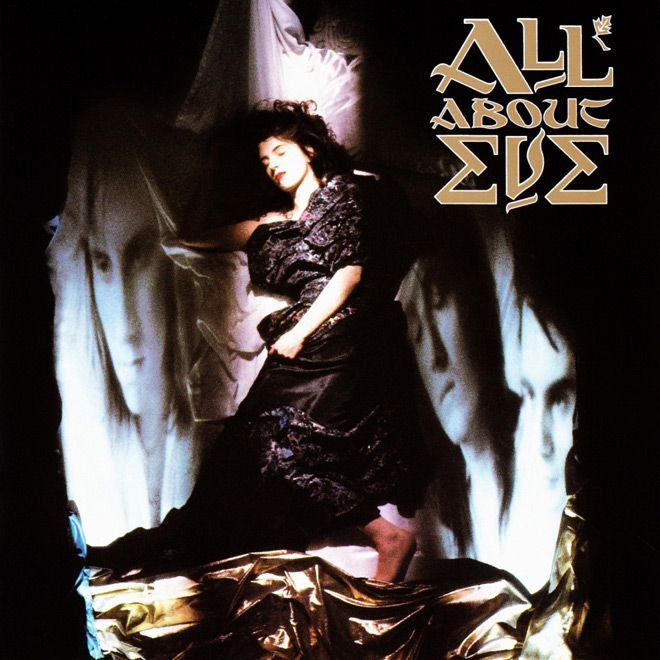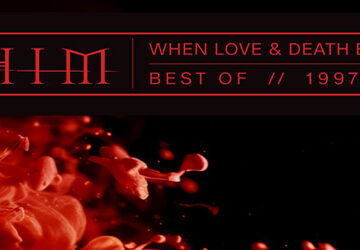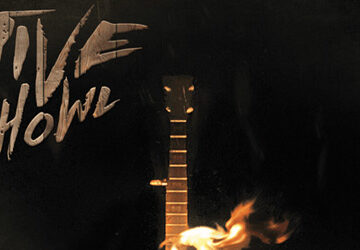Of all the Gothic-inspired bands that made their mark in the late ’80s, All About Eve was one of the few that stood out of the flock. This may be attributed to the English outfit’s music being rooted more on Folk than on Rock, thus giving it a more organic, rustic, and innate sensibility that could strum a chord of familiarity in the heartstrings of the music enthusiast. The Gothic Rock sound of classic bands such as Bauhaus (“Rosegarden Funeral of Sores”), The Danse Society (“Heaven Is Waiting”), Gene Loves Jezebel (“Shower Me with Brittle Punches”), Siouxsie & the Banshees (“Sin in My Heart”), and The Sisters of Mercy (“Lucretia, My Reflection”), for instance, is more electric, Glam, and Rock-sounding; whereas All About Eve’s is more atmospheric, ethereal, primal, and even acoustic-oriented in some corners; rather akin to the sonic excursions of Cocteau Twins (“Shallow then Halo”) and Progressive Folk bands like Iona (“Flight of the Wild Goose”).
Formed in 1984, in London, England, All About Eve consisted of Julianne Regan (vocals), Tim Bricheno (guitar; replaced in 1990 by The Church’s Marty Willson-Piper), Andy Cousin (bass), and eventually Mark Price (drums). During its original, decade-long career, All About Eve got to release four studio albums – from 1988’s debut offering to 1992’s Ultraviolet. The following year, the band began work on their fifth oeuvre, but Regan left in the middle of everything, leaving Cousin, Price, and Willson-Piper (vocals, guitar) in the process and prompting the trio to finish the project and eventually release it as an eponymous album under the moniker Seeing the Stars.
In the early 2000s, All About Eve re-formed for a couple of years for a series of concerts and a final EP, but they were unable to recapture the drive and prolificity of their imperial phase.
So much has been said about the music of the band, but if one wants to revisit it, there is no more apt album to start with but the band’s first full-length, which turned 30 this year – for it captured the sonic purity and naivety of the band. As well, it exuded the members’ youthful sense of eagerness, exuberance, and excitement in exploring their musical influences and incorporating these into their own ideas.
Released on February 16, 1988 on Mercury Records, All About Eve opened with one of the most popular songs of the band – the upbeat, soulful, and nostalgic “Flowers in Our Hair.” Following next was the Flamenco/Psych Folk–flavored “Gypsy Dance” and the somber and chiming “In the Clouds,” whose haunting rhythm gave way to the flowing voice-and-acoustic-guitar beauty “Martha’s Harbour.”
“Every Angel” then took the listener to proper Gothic Rock terrains, with its scathing guitar melody, driving basslines, and four-on-the-floor drumbeat – which surely owed inspirations from some of Regan’s peers such as X-mal Deutschland (“Sickle Moon”) and The Mission (“Severina”). The ensuing “Like Emily” was another acoustic-oriented trip back to the band’s folky roots and a further display of Regan’s mellifluous voice and occasional falsettos.
All About Eve then adorned themselves with Glam regalia as they launched into the virtually metallic power ballad “Shelter from the Rain,” revealing Bricheno’s Glam influences. Then there was the band’s sparse, melancholic rendition almost a dirge – of the traditional Irish Folk song “She Moves through the Fair,” most likely a homage to Regan’s Irish ancestry. The poignant mood carried on to “Wild-Hearted Woman” – a beautiful ballad combining the grace and finesse of Folk Psychedelia and Glam as well as Gothic Rock.
A change of season and style, the piano-adorned “Never Promise (Anyone Forever)” and the acoustic guitar–dominated “Apple Tree Man” were a trek to Dreampop territory, albeit less eerie but still folky and psychedelic.
The minimalist, piano-led “What Kind of Fool” then swung and swayed like a pendulum in a quiet night. Then the second-to-the-last track, “In the Meadow,” returned the listener to the overall Gothic theme of the album. Finally, All About Eve called the night off with another pensive, Gothic Pop ballad – “Lady Moonlight,” whose guitar plucks, sad melodies, and string orchestration reverberated faint echoes of wastelands and conjured images of butterflies in a wheel.
All About Eve had been inadvertently lumped with the New Wave Gothic bands that flourished in the late ’80s, not only because of Regan’s sense of fashion but also because of her connection with many of the scene’s movers and shakers, brought about by her being a fledgling music journalist prior to her forming a band. However, if one will take time to listen to All About Eve’s entire discography, then one will realize that the band’s musical influences were not limited to the Post-Punk Gothic music of the 1980s; instead, it was rooted more in late ’60s Psychedelic Folk and even farther back to traditional Folk music; but then, glazed also with post-modern psychedelia. This was inarguably the primary reason All About Eve stood out well in the scene in which it operated and prospered. Their 30-year-old debut remains a solid testament of this.
Spend a night with All About Eve and listen for yourself, and let the songs take you back not only to the dark and gloomy Gothic realms of a few decades ago, but also to the black-and-white moments in an unknown but hazily familiar distant past.






No comment